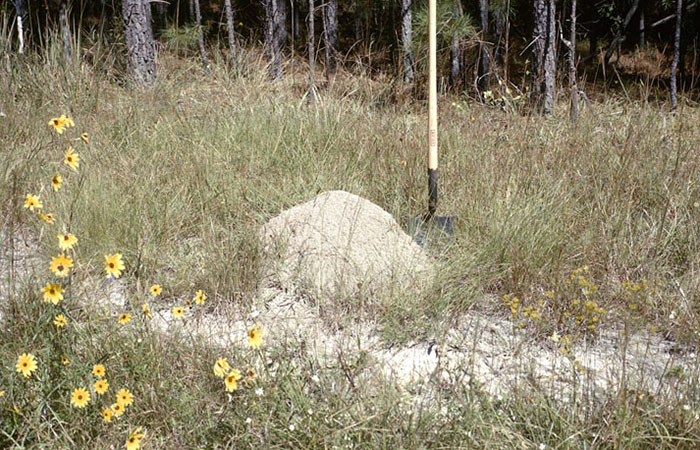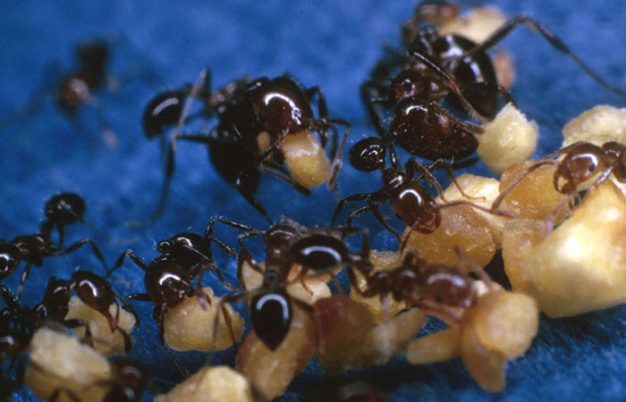You live in the Southern tier of the United States.
It’s within a few days of some heavy rain.
As if it popped up overnight, you see a mound of soft, fluffy soil in your yard.
The mound doesn’t appear to have a hole at the top.
Yes, you most likely have fire ants.
While fire ants are spreading, these insects remain most prevalent in the southern, moister climate of the US. While they are there with or without noticeable mounds, their mound-building activity is more obvious after a rainfall (they don’t typically build mounds in excessive heat or drought conditions when food is scarcer and colonies are weaker).
Most fire ant mounds are just a few inches tall.
Fire ant mounds can reach a foot or more in height, but most mounds are just a few inches tall, so they blend in easily with the landscape. What’s trickier is that there is no hole at the top as you might find with other ant mounds, so they are more easily mistaken as plain, old dirt. Red ants enter and exit their domains through underground tunnels.
When broken apart by digging, kicking, stepping on or moving the dirt in the mound, fire ants quickly go on the attack and look to protect their property. This means many of these small, biting insects will climb up anything – including your legs – leaving multiple stings behind. These stings – and there will be multiple ones – lead to the resulting pain and itch that only Fire-Out can tame.
If you live in an area where fire ants are common, or if you suspect that you might have fire ants in your yard, make sure to regularly inspect for mounds, particularly after rain. If you have children playing outside, teach them how to identify fire ant mounds to help reduce risk of stings. Pets can also disturb mounds and be stung, so it may be best to leash walk dogs in high-risk areas vs. letting them roam your yard.
Photo credit:USDA APHIS PPQ, Bugwood.org









